
Konstantin Sergeyevich Stanislavski was a seminal Soviet Russian theatre practitioner. He was widely recognized as an outstanding character actor, and the many productions that he directed garnered him a reputation as one of the leading theatre directors of his generation. His principal fame and influence, however, rests on his "system" of actor training, preparation, and rehearsal technique.

The Seagull is a play by Russian dramatist Anton Chekhov, written in 1895 and first produced in 1896. The Seagull is generally considered to be the first of his four major plays. It dramatizes the romantic and artistic conflicts between four characters: the famous middlebrow story writer Boris Trigorin, the ingenue Nina, the fading actress Irina Arkadina, and her son the symbolist playwright Konstantin Treplev.

Stanislavski's system is a systematic approach to training actors that the Russian theatre practitioner Konstantin Stanislavski developed in the first half of the twentieth century. His system cultivates what he calls the "art of experiencing". It mobilises the actor's conscious thought and will in order to activate other, less-controllable psychological processes—such as emotional experience and subconscious behaviour—sympathetically and indirectly. In rehearsal, the actor searches for inner motives to justify action and the definition of what the character seeks to achieve at any given moment.
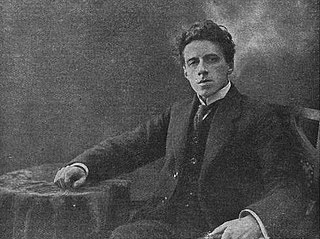
Vsevolod Emilyevich Meyerhold was a Russian and Soviet theatre director, actor and theatrical producer. His provocative experiments dealing with physical being and symbolism in an unconventional theatre setting made him one of the seminal forces in modern international theatre.

Yevgeny Bagrationovich Vakhtangov was a Russian actor and theatre director who founded the Vakhtangov Theatre. He was a friend and mentor of Michael Chekhov. He is known for his distinctive style of theatre, his most notable production being Princess Turandot in 1922.
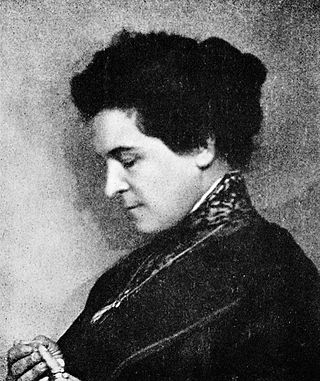
Olga Leonardovna Knipper-Chekhova was a Russian and Soviet stage actress. She was married to Anton Chekhov.

The Moscow Art Theatre (or MAT; Russian: Московский Художественный академический театр, Moskovskiy Hudojestvenny Akademicheskiy Teatr was a theatre company in Moscow. It was founded in 1898 by the seminal Russian theatre practitioner Konstantin Stanislavski, together with the playwright and director Vladimir Nemirovich-Danchenko. It was conceived as a venue for naturalistic theatre, in contrast to the melodramas that were Russia's dominant form of theatre at the time. The theatre, the first to regularly put on shows implementing Stanislavski's system, proved hugely influential in the acting world and in the development of modern American theatre and drama.

Vladimir Ivanovich Nemirovich-Danchenko was a Soviet and Russian theatre director, writer, pedagogue, playwright, producer and theatre administrator, who founded the Moscow Art Theatre with his colleague, Konstantin Stanislavski, in 1898.
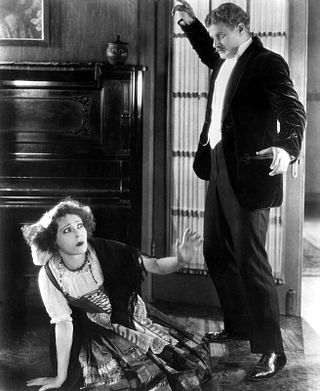
Realism in the theatre was a general movement that began in 19th-century theatre, around the 1870s, and remained present through much of the 20th century. It developed a set of dramatic and theatrical conventions with the aim of bringing a greater fidelity of real life to texts and performances. These conventions occur in the text, design, performance style, and narrative structure. They include recreating on stage a facsimile of real life except missing a fourth wall. Characters speak in naturalistic, authentic dialogue without verse or poetic stylings, and acting is meant to emulate human behaviour in real life. Narratives typically are psychologically driven, and include day-to-day, ordinary scenarios. Narrative action moves forward in time, and supernatural presences do not occur. Sound and music are diegetic only. Part of a broader artistic movement, it includes Naturalism and Socialist realism.

Aleksei Dikiy was a Soviet actor and director who worked at Moscow Art Theatre and later worked with Habima Jewish theatre in Tel Aviv. He was arrested and imprisoned in Gulag under the dictatorship of Joseph Stalin but later played the role of Joseph Stalin in several films.

The Stanislavski and Nemirovich-Danchenko Moscow Academic Music Theatre is a music theatre in Moscow.

The Moscow Art Theatre production of The Seagull in 1898, directed by Konstantin Stanislavski and Vladimir Nemirovich-Danchenko, was a crucial milestone for the fledgling theatre company that has been described as "one of the greatest events in the history of Russian theatre and one of the greatest new developments in the history of world drama." It was the first production in Moscow of Anton Chekhov's 1896 play The Seagull, though it had been performed with only moderate success in St. Petersburg two years earlier. Nemirovich, who was a friend of Chekhov's, overcame the writer's refusal to allow the play to appear in Moscow after its earlier lacklustre reception and convinced Stanislavski to direct the play for their innovative and newly founded Moscow Art Theatre (MAT). The production opened on 29 December [O.S. 17 December] 1898. The MAT's success was due to the fidelity of its delicate representation of everyday life, its intimate, ensemble playing, and the resonance of its mood of despondent uncertainty with the psychological disposition of the Russian intelligentsia of the time. To commemorate this historic production, which gave the MAT its sense of identity, the company to this day bears the seagull as its emblem.

Vasily Ivanovich Kachalov, was one of Russia's most renowned actors. He worked closely and often with Konstantin Stanislavski. He led the so-called Kachalov Group within the Moscow Art Theatre. It was Kachalov who played Hamlet in the Symbolist production of 1911.
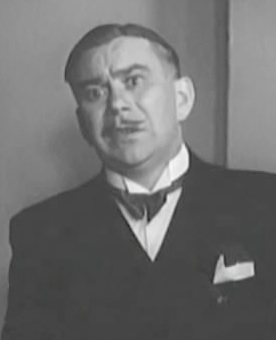
Mikhail Mikhailovich Yanshin was a Soviet stage and film actor.
Maria Osipovna (Iosifovna) Knebel was a Soviet and Russian actress, theatre practitioner and acting theorist. Having trained with Konstantin Stanislavski, Vladimir Nemirovich-Danchenko, and Michael Chekhov, her work integrated the approaches and emphases of all three, with a particular focus on Stanislavski's technique of "active analysis" in the rehearsal of plays. She worked as a character actor, a theatre director, and a teacher. Her students included the actor Oleg Yefremov, the playwright Viktor Rozov, and the directors Anatoly Vasiliev, Leonid Heifetz, Alexander Burdonsky, Beno Axionov, Joseph Raihelgauz, Sergei Artsibashev and Adolf Shapiro as well as director and theatre practitioner Sam Kogan. In 1958, she was named a People's Artist of the RSFSR.
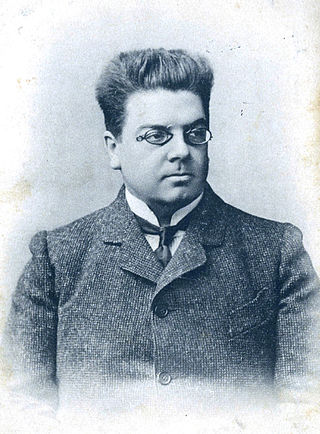
Vasily Vasilyevich Luzhsky was a Russian, Soviet stage actor, theatre director and pedagogue, associated with the Moscow Art Theatre.

The Artist was an illustrated Russian magazine on theatre, music, literature and fine arts published in Moscow in 1889-1895. It was coming out monthly but only during the theatre seasons, from September till April. The playwright, translator and theatre critic Fyodor Kumanin was the journal's founder, publisher and originally its editor. Another important figure instrumental with the launching of this biggest theatrical publication in Russia was Sergey Yuriev.

Evtikhy Pavlovich Karpov was a Russian and Soviet playwright and theatre director.
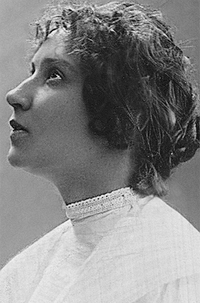
Maria Lyudomirovna Petrovskaya was a Russian stage actress associated with the Moscow Art Theatre, better known under her stage name Roksanova (Роксанова).

















